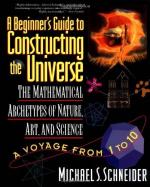|
This section contains 174 words (approx. 1 page at 400 words per page) |

|
What is the monad? What is the dyad? Explain the significance of both and how they interplay with one another.
What is the horizon number? Why is this number referred to as the horizon number? What does the position of this number signify?
What does the phrase "tessellating hexagon" mean? What are examples of this design in nature? Why is this design strong and the best use of space?
Describe the Chinese book The I Ching. Why is it also called the book of changes? Who created it and why could it have significance in modern times?
What does the pentad represent? What is the rabbit riddle? What are the Fibonacci sequences?
Why is the seven referred to as a virgin? Why is the eight called promiscuous? What legends are attached to each?
What is the decad? Symbolically the decad is said to contain...
|
This section contains 174 words (approx. 1 page at 400 words per page) |

|



